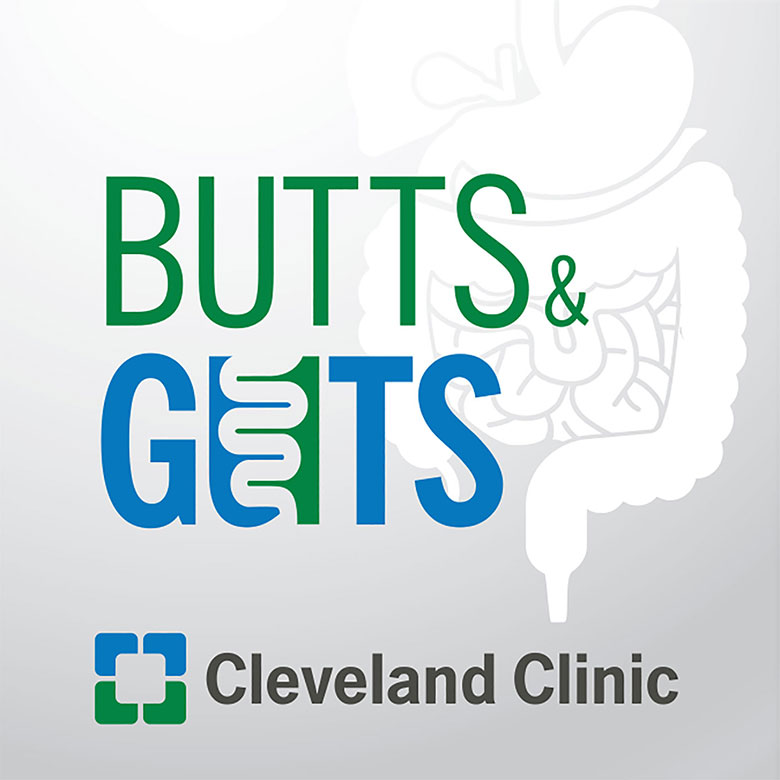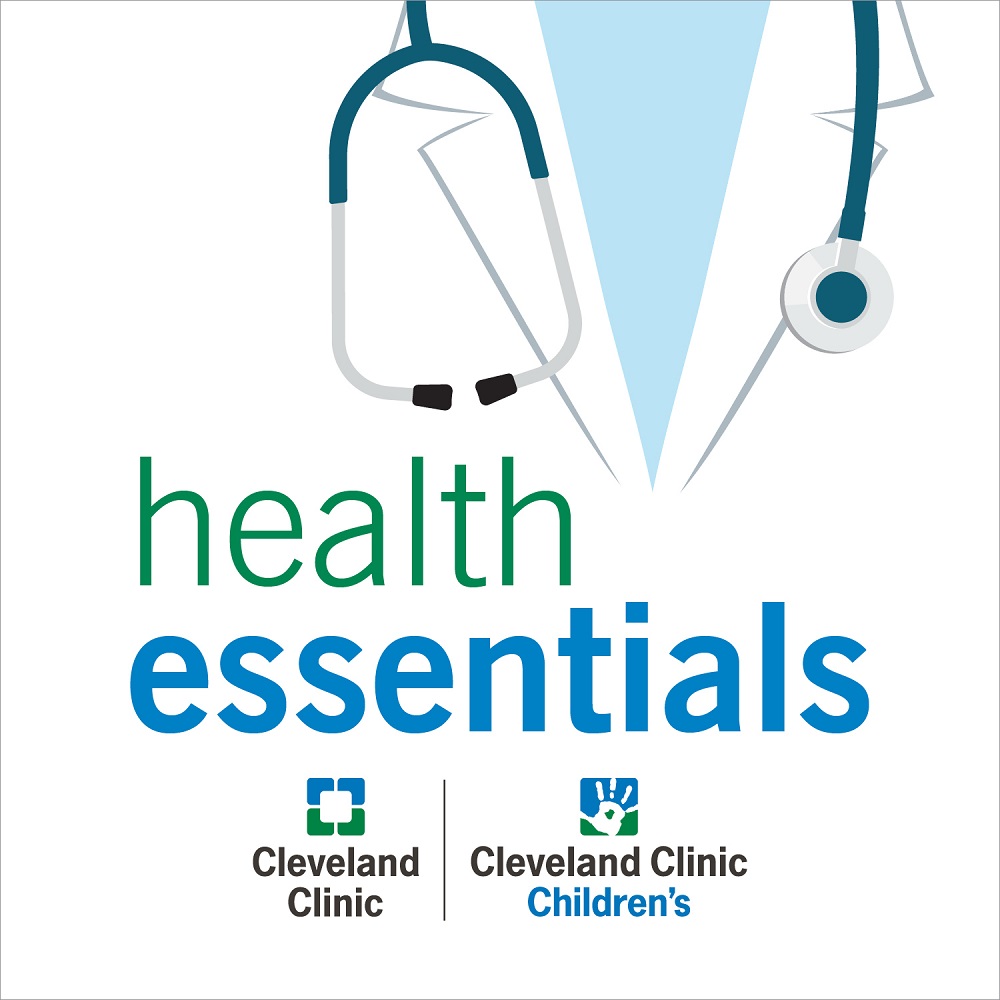Treating Chronic Thromboembolic Pulmonary Hypertension

Chronic thromboembolic pulmonary hypertension (CTEPH) is a type of pulmonary hypertension caused by chronic blood clots in the lungs. It is an under-recognized condition that can be treated and cured in many cases. Michael Tong, MD, and Gustavo Heresi, MD, discuss diagnosis, medical treatment and surgical options for people with CTEPH.
Schedule an appointment at Cleveland Clinic by calling 844.868.4339.
Learn more about pulmonary hypertension treatment.
Subscribe: Apple Podcasts | Podcast Addict | Buzzsprout | Spotify
Treating Chronic Thromboembolic Pulmonary Hypertension
Podcast Transcript
Announcer:
Welcome to Love Your Heart, brought to you by Cleveland Clinic's Sydell & Arnold Miller Family Heart, Vascular and Thoracic Institute. This podcast will explore disease prevention, testing, medical and surgical treatments, new innovations and more. Enjoy.
Michael Tong, MD:
Welcome to our Cleveland Clinic podcast. Today we will be talking about chronic thromboembolic pulmonary hypertension, or CTEPH for short. With me today I have Dr. Gustavo Heresi, who is our medical director of our CTEPH program. My name is Michael Tong, and I'm the surgeon who performs many of these operations.
Today we're going to be talking about what this disease is, how do patients recognize that they may have symptoms of this disease, as well as some of the treatment options that we have and what we can do for you here at the Cleveland Clinic.
So, welcome and thank you, Dr. Heresi, for coming. For our listeners here, tell us what is pulmonary hypertension? What is CTEPH? How does that affect the body, and the symptoms that patients may develop?
Gustavo Heresi, MD:
Thank you. It's my pleasure to be here, Michael. Pulmonary hypertension, a good way to think about it is the other hypertension. Most people are familiar with high blood pressure that's measured in the arm, but it turns out that you can also have high blood pressure in the lungs, and we call that pulmonary hypertension. It is more difficult to diagnose that because the pulmonary arteries are deep in the chest. With an echocardiogram, we get a sense for the pulmonary pressures, but to confirm the diagnosis, it requires more invasive procedures such as inserting a catheter in the pulmonary artery. Most people will end up needing that to know if you have pulmonary hypertension. The most common symptom is shortness of breath, with exceptional limitations. When the disease is a bit more advanced, people can have more serious symptoms like light headiness, passing out and fluid retention.
But one of the challenges with this presentation is there's nothing really specific about the symptoms that our patients may experience. More common things, like COPD, asthma, and more common forms of heart failure can present very similarly. So, we have to have a high index of suspicion. The last thing I will say is that, with regards to pulmonary hypertension, that term in and of itself is not a final diagnosis, it just refers to a state where their blood pressure in the lungs is high but then we need to do a really detailed evaluation to really pinpoint the causes of pulmonary hypertension, which are many.
Michael Tong, MD:
One of the causes that we do have treatments for, because many forms of pulmonary hypertension, unfortunately there are no curative treatments, we have conditions, we have medications and procedures that can control it, but one of the conditions where we can treat and cure the patients from it is CTEPH. Tell our audience, what is CTEPH?
Gustavo Heresi, MD:
Precisely. CTEPH is basically when we determine that pulmonary hypertension is due to chronic blood clots. This is called group four pulmonary hypertension. Just for context, the most common causes of pulmonary hypertension are group two, which is due to left heart issues like myocardial infarction, mitral valve disease. Group three is pulmonary hypertension due to lung diseases such as emphysema or pulmonary fibrosis. Group one, which is the least common of these, is what we call pulmonary arterial hypertension. That includes things like what we used to call primary pulmonary hypertension, now it's called idiopathic, or things like connective tissue disease and other conditions that lead to pulmonary arterial hypertension.
For all of these forms, treatment options are somewhat limited. We've gotten much better for pulmonary arterial hypertension, or group one. We have pretty effective medical therapy, but none of them are curative. For group four, for pulmonary hypertension due to chronic blood clots, we do have many treatment options that are very effective. In fact, for many of our patients, they can be curative, which is why we're here talking about this condition. The important thing to remember is that again, it requires detailed evaluation. Even after an echo, a right heart catheterization, we will not know that the pulmonary hypertension is due to blood clots unless we do a detailed evaluation that includes detailed imaging, which I'm sure we'll talk about in a bit.
Michael Tong, MD:
Yeah. Often these patients start with having a pulmonary embolism at some point in their lives. The majority of these patients may have had multiple pulmonary emboli in their lives, but there's also a lot of patients who we see that have clots in their lungs that have never developed a pulmonary embolism. Tell us a little bit about what are some of the risk factors that give us clues that these patients may have clots in their lungs that have over time developed CTEPH?
Gustavo Heresi, MD:
Yeah, that's an excellent point. In fact, in older case series, older data, up to half of the patients with CTEPH will not provide us with a history of a prior clot. More recently, I think with the widespread availability of CAT scanning, that number has shrunk. Now, I think a lot of patients do have a history of prior pulmonary embolism, but not all of them.
Other risk factors include things like, for example, thyroid dysfunction, indwelling catheters for other cardiac conditions, pacemakers, things like that, a history of splenectomy is a common one that we see, underlying hematologic disorders. All of them certainly can enhance your suspicion, but the reality is that we see patients who have none and even no history of a prior clot. That's why we always do detailed imaging, and that includes ventilation-perfusion scan, and we review the CAT scan of the chest very carefully in all of our patients with pulmonary hypertension because frequently, even without any risk factors, we will find blood clots as the reason for the PH.
Michael Tong, MD:
I've also noticed that sometimes in women who've had multiple miscarriages and that was never diagnosed, and other patients who were told that their blood is thicker or they have clotting disorders, often those are the patients that we suspect may have CTEPH.
Gustavo Heresi, MD:
Yeah, that's another big group ,and antiphospholipid syndrome related to that in women, we are beginning to see women with fibroids in the uterus that can lead to clots in the pelvic veins. So yeah, those are important risk factors as well.
Michael Tong, MD:
I am also of course, a cardiac surgeon, I do a lot of other cardiac surgeries, and particularly when I deal with patients that have aneurysm disease, often those patients, they're picked up by accident. They're doing a CT looking for something else, and by accident they find that they have an aneurysm. But for CTEPH, it's rare that patients discover this by accident because the CT that we got to diagnose, the timing of the contrast is different than the timing of the contrast that we deliver for many other types of CTs. The VQ scan is really not something that is done for any other disease.
So often I find that when patients are coming to see us, it's not uncommon for them to say, “I've been dealing with shortness of breath for three years and I've been told I may have this, I may have this, I may have this. None of the treatment works. I am so thankful that I actually know what I have now.” What makes it so challenging to diagnose CTEPH sometimes, we have all these patients that have PEs and it's estimated that about 3% of patients that have PEs will go on to develop chronic clots in the lungs that develop pulmonary hypertension, and yet what we think is the number of patients out there versus the number of patients that are actually seen across the United States, there's such a discrepancy. What makes this disease so hard to diagnose and so hard to identify?
Gustavo Heresi, MD:
Yeah, certainly it's a vastly under-recognized condition. I think there are a number of factors. The first one is something that I alluded to a bit earlier is the symptoms are not specific. So people present with symptoms that are frequently ascribed to other more common conditions. in fact, a common scenario is that people have the shortness of breath for a couple of years or even more, and they were told they have asthma, COPD, are treated for that and they don't improve. So non-specific symptoms is one.
The second one is what you were talking about earlier is that the imaging modalities that we need to find these chronic clots are fairly specific. Perfusion scans, CT pulmonary angiography with perfectly timed volumes of contrast. But in addition to that, I think that the expertise, the experience, that we require to pick up on these chronic clots, even routinely done CAT scans or specialized CAT scans, it's just not widespread. So what I mean by that is we frequently see people who had a CT looking for blood clots and the read has no blood clots. Then we see that CAT scan and we scrutinize it and within our multidisciplinary team, and with our experience, we're able to see, okay, there is a blood clot here and the chronic blood clot has been there even for a couple of years. So I think that that's the other challenge, finding the findings consistent with chronic clot on CT, it's just difficult and that expertise is not widespread.
The final thing is, you mentioned earlier as well, just the fact that people are not doing VQ scans anymore, and this is an important point for our listeners. CAT scans are great for acute clots but are not that great for chronic clots for the reasons that we just discussed. So we always say that a VQ scan is helpful because if it's abnormal in a patient with shortness of breath, that should prompt further evaluation for chronic clots.
Michael Tong, MD:
And I think that's an important message. Anybody who has had a history of pulmonary embolism, and now time has gone by and they've been told that their clots are now dissolved, yet they continue to be short of breath, yet they continue to be limited with exercise and exertion, we really should be evaluating a little more carefully whether or not they have CTEPH. We see each other every Thursday morning at 6 AM to go through all these new patients and all these consults, and what's striking to me is how unreliable CT is sometimes. Not unreliable in a sense that the CT doesn't pick things up, but rather just the resolution of the CT doesn't allow us to see blood vessels that are smaller than four or five millimeters or so. Sometimes we see patients that have clots that are in the very small vessels, not in the larger vessels, but in very small vessels and that's when we often will go to a pulmonary angiogram.
And it's remarkable how much better we see things in the pulmonary angiogram than we do on the CT. We review all these patients with our radiology colleagues and they're able to pick up subtle things that I myself would never have picked up otherwise and I think that is really the remarkable thing about us working together. We've been working together for over 12 years now and just this multidisciplinary, having all these experts together, looking at these patients, understanding how these patients have been diagnosed over time and the treatment options, and we've really learned from each other, learned from every patient, and we've continuously gotten better. I think that's one of the beauties of having patients come here and evaluate together and studying these patients together and treating these patients together.
Gustavo Heresi, MD:
Certainly, I think that the multidisciplinary approach to this disease is key. Everybody comes from a different background and perspective. Myself, for example, with experience in pulmonary vascular disease for many years in treating with pulmonary vasodilator medications, world-class cardiopulmonary surgeons, the imaging piece is really important, our relationship with our diagnostic imaging colleagues is really important. Again, these imaging modalities, putting them all together, frequently culminating into the pulmonary angiogram.
One thing that we really enjoy seeing here in the Cleveland Clinic, patients benefit from really ultra-advanced imaging techniques such as cone beam CT that our imaging colleagues do.
Michael Tong, MD:
When we take patients to surgery nowadays, we have almost a 100% certainty that we have the right diagnosis. But in the past, there are a lot of situations where patients were going for surgery and it turned out that it wasn't CTEPH and it was something else that's completely different, and consequently, the results were not as good. You either can't take things out or what you take out is just not necessarily a clot. Tell us about some of the other conditions that sometimes can be mistaken for CTEPH.
Gustavo Heresi, MD:
And that's a bit of the art and also the experience of dealing with this condition. There are things that look like CTEPH on VQ scan, even CT pulmonary angiography, but they are not CTEPH. There are several, but the couple that are most important I would say is something that we call in-situ thrombosis. These are people with other forms of pulmonary hypertension. Their pulmonary arteries are enlarged, so blood flow is not normal, it's a bit stagnant, and those people can clot in the artery. They do have clots. They're chronic because they've been there for a long time, but they're not CTEPH.
If you remove those clots, the pulmonary pressures don't change at all, and then you are in trouble. We see that in our patients with long-standing arterial hypertension, pulmonary arterial hypertension, in an idiopathic form we sometimes see that also in our patients who have pulmonary hypertension due to very advanced lung disease like terminal emphysema or terminal fibrosis, sometimes clots develop in the artery. But the trickier ones are the ones that have long-standing pulmonary hypertension and also those with congenital heart disease.
We see this in people who have right-to-left shunt. They start with left-to-right shunt, over time, they develop a right-to-left shunt, and these patients can develop this and cyto trombosis. Other things that look like CTEPH but they are not, can be pulmonary artery sarcoma. We've gotten really good at figuring that out and PET scans are useful for that. Then for example, fibrosing mediastinitis, in our neck of the woods in Ohio, that's a common condition that can look like CTEPH. I would say those are the three major ones. There are rarer things, like sarcoidosis can do that, vasculitis, but the in-situ thrombosis, fibrosing mediastinitis and pulmonary artery sarcoma are the big ones, I would say.
Michael Zhen-Yu Tong, MD:
Great. At the end of the day, this is where the experience comes in. This is not just the experience of an individual, but the whole experience as a team and we're able to build off each other's experience and making the right decisions for that patient.
Now, over the last 10 years or so there’s really been an explosion in the medical treatment for pulmonary hypertension, and some of those medicines that we're using to treat patients with CTEPH. Can you talk a little bit about how medicines have evolved for patients with pulmonary hypertension, specifically in patients with CTEPH, and how do we see medicines as a complementary role with surgery and other treatments?
Gustavo Heresi, MD:
Yeah. Certainly, the treatment options have exploded. But one thing that I will emphasize, and you've heard us speak about surgery for a long time, is that surgery is the treatment option number one, right? We say one through 10, right? That's why we always tell people, if you suspect CTEPH as a diagnosis or if you know you have CTEPH, you have to come to a center like ours to get an assessment for the surgery. So surgery is the treatment option, number one.
But it turns out that this disease is not only a clot, besides the clot in the big arteries there's always a component of what we call microscopic vasculopathy. So these are the tiny little vessels that we cannot see on any of these imaging modalities that are also shut down. Under the microscope that looks very similar to our patients with group one pulmonary arterial hypertension. So that's a strong sort of physiologic rationale to try all these pulmonary vasodilators that we have successfully used in group one pulmonary arterial hypertension.
We have one that we know is very effective, one pill, that's taken three times a day is called Riociguat, very good clinical trial data, very good experience, we think it works quite well. Unfortunately, many other trials have been done with some of the other pulmonary vasodilators, and for complicated reasons they fail. So there's no other FDA-approved medication for CTEPH other than Riociguat. That said, we think that in certain patients where the pulmonary pressures are really high, a lot of the other pulmonary vasodilators, including the infused prostacyclins are useful.
In fact, we have experienced with some of our sickest patients where we start with aggressive medical therapy and then you take them to the operating room, remove the cloth, and then we're able to peel down some of the most cumbersome medications like the infused prostacyclins, and we're able to manage them with medication. I think we are finding that for many patients the role of medical therapy can be complementary.
Michael Tong, MD:
Yeah, and I do find that, let's say we have a new patient that comes in and we're evaluating that patient, and their pulmonary pressures are extremely high to the point where surgery becomes extremely risky, if we can treat them with medications and get their pulmonary pressures down to a safer level before I take them to surgery, we can get them through surgery with a much lower risk.
For the majority of our patients after surgery, we are successful in getting them off their medications. Now, there are certain patients where they either come with mixed disease where they have clots in the bigger vessels, but also clots in the smaller vessels, or they may still have some disease that we just can't get to with surgery. Tell us about what are the new treatments that we have for some of those patients that may still have some residual disease.
Gustavo Heresi, MD:
I think that has been the major breakthrough over the last probably 10 years now, or more recently even. We used to have surgery, then medical therapy, and now we have balloon pulmonary angioplasty. That's performed by our interventional radiology colleagues. It has two main roles. One is in people who have distal clots, very, very small clots that may be beyond the reach of the surgical instruments, or even if they're reachable, the imbalance between the pulmonary hypertension severity and the amount of clots may make surgery not a good idea. We call that technically inoperable CTEPH. Those patients are typically treated with a combination of medical therapy first and then balloon pulmonary angioplasty to open up these very small vessels that are occluded by these chronic clots.
The other role for balloon pulmonary angioplasty is for those patients that are taken to the operating room and the extraction is extremely successful, but sometimes there's tiny little clots left behind here and there. Sometimes those patients do have some degree of residual pulmonary hypertension that we can manage with medical therapy, but then we can further improve their condition with balloon pulmonary angioplasty.
So I think we're seeing that this interventional modality is really allowing us to treat now the vast majority of patients with a very, very high degree of success, while let's say 20 years ago patients who couldn't get operated on, the treatment options were more limited and the outcomes weren't that great. I think we live in an era where the treatment modalities for CTEPH have expanded so much, underscoring the importance of the multidisciplinary team. Because you need a medical guy like me for pulmonary vasodilators, very experienced surgeons for the extraction, but also now people experienced with the balloon procedure that can really improve the patient's situation dramatically.
Michael Tong, MD:
I think the most dramatic thing that I can tell a patient, often patients will ask me, if I undergo surgery, what is the rest of my life going to look like versus if I don't go for surgery, what is the rest of my life going to look like? And often, these are young patients, twenties, thirties, and they have many decades ahead of them. With our treatments nowadays with surgery, balloon and the medications and in combination, most of the times it's just surgery, but sometimes we do use combination, I feel pretty confident in when I tell them, if we can get you to surgery and I feel very confident I could get all the disease out, then your survival should be the same as somebody who's the same gender, same age as you who doesn't have this disease. Do you agree with that assessment?
Gustavo Heresi, MD:
Yeah, I completely agree. I think we have some of our own data out there that's showing that the long-term survival of our patients is excellent. There's also international registry data showing that with surgery and now on people that cannot get operated on, but with medical therapy and balloon pulmonary angioplasty, long-term survival is really very similar to the general population. So yeah, I think that just sort of highlights the importance of early recognition and hopefully early referral to an expert CTEPH center like ours.
Michael Tong, MD:
And we've also shown that even if these patients come in and their right heart is already struggling because of the pulmonary hypertension and their kidneys may be struggling, the liver may be struggling, even in those patients with already very advanced disease, we can still help them and get their lives back on track. I think this is a population that I feel is one of the most rewarding to operate on because of such a dramatic difference that you can make for them and how much better, not just living longer lives, but just how much better of a quality of life they can live for the rest of their life. It's truly, truly rewarding.
Gustavo Heresi, MD:
Absolutely. For me as a medical person, absolutely. I see patients after you operate them and they look so well that that's unlike anything that I see in my world. But I think your point of there's really no level of pulmonary hypertension and right ventricular failure that would stop us from treating these patients surgically, and I would extend that to, for example, BMI. I think we've gotten very experienced with operating on patients with severe obesity. Age, there's no age limit. So people in their seventies and eighties, we routinely operate on. There's really no clear-cut contraindication to this operation.
Michael Tong, MD:
And our outcomes have gotten so good. Our survival is north of 99% now for this operation, which is just remarkable compared to how far this field has come in the last 10 to 15 years.
So now just as a wrap-up, tell our audience what is the final takeaway message for patients who may have had pulmonary embolus before and who are short of breath. What would you tell them?
Gustavo Heresi, MD:
Yeah. I would say that CTEPH is vastly underrecognized. If you had a history of a prior clot or even without a history of a prior clot, if you have shortness of breath for several months, even years, and you and your doctors don't know why, I would say ask them to think about blood clots and look for blood clots with a ventilation perfusion scan with a CAT scan. If there are any abnormalities there, discuss with your doctors about a referral to a CTEPH center that may be close to you, and if you're in our area, we're here certainly to help. Because pulmonary hypertension due to chronic blood clots, so-called CTEPH, is highly treatable, curative in many cases, that's unlike any other form of pulmonary hypertension, and quite frankly, almost unlike any other form of pulmonary disease. This is the one lung disease that can be cured with a surgical intervention, so I think that that would be my key message to our audience.
Michael Tong, MD:
Great. Well, thank you very much. Thank you for listening to the Love Your Heart Podcast, and it is a pleasure.
Gustavo Heresi, MD:
It was fun. Good to see you, Mike. Wonderful.
Michael Tong, MD:
Thank you very much.
Announcer:
Thank you for listening to Love Your Heart. We hope you enjoyed the podcast. For more information or to schedule an appointment at Cleveland Clinic, please call 844.868.4339. That's 844.868.4339. We welcome your comments and feedback. Please contact us at heart@ccf.org. Like what you heard? Subscribe wherever you get your podcasts, or listen at clevelandclinic.org/loveyourheartpodcast.

Love Your Heart
A Cleveland Clinic podcast to help you learn more about heart and vascular disease and conditions affecting your chest. We explore prevention, diagnostic tests, medical and surgical treatments, new innovations and more.


